Soil Bound LLC | 570-380-3153
Soil Bound LLC | 570-380-3153
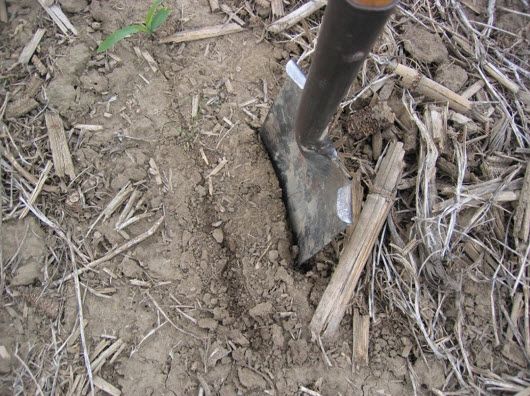
Step 1. Place the spade about 4-6 inches from the row and insert it to a depth of about 8-10 inches.
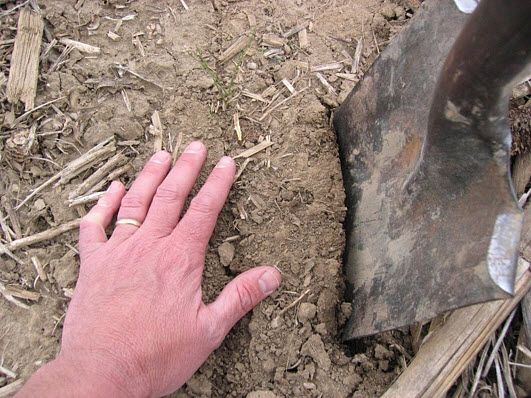
Step 2. Place your other hand on the opposite side of the seed row and hold it in place while you pry with the spade.
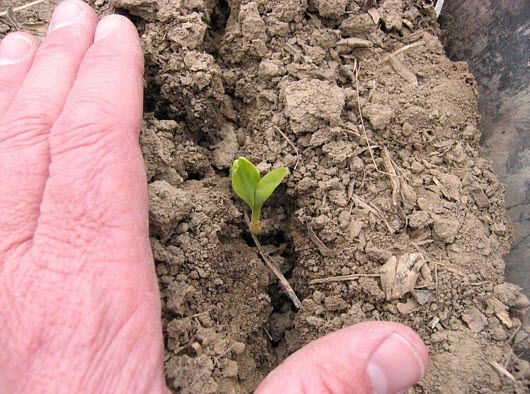
Step 3. The seed furrow seam should open with relative ease.
Getting the soil to break cleanly at the seed furrow slot doesn’t work every time. It works best when the soil is moist and/or has a higher clay content.
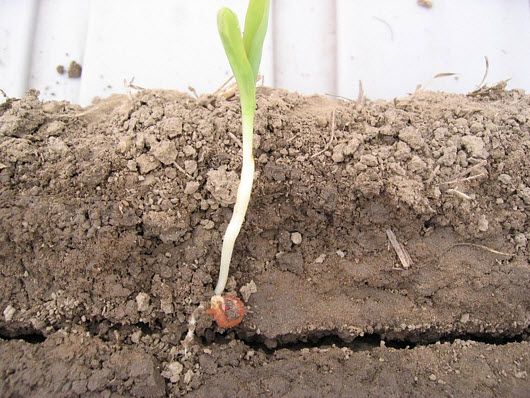
Step 4. This technique helps preserve the structure of soil around the seedling and can reveal the presence of sidewall compaction.
This plant has restricted root growth due to the sidewall compaction. The roots are also showing some seedling diseases. This combination of factors has slowed the growth of this emerging seedling.
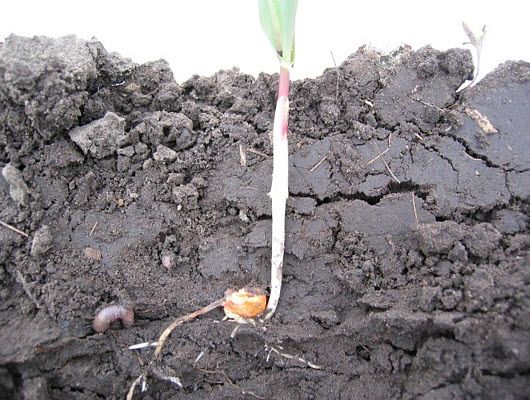
In this example the radicle was damaged by seedling diseases but note new growth on both the radicle and seminal roots. There are signs of sidewall compaction.
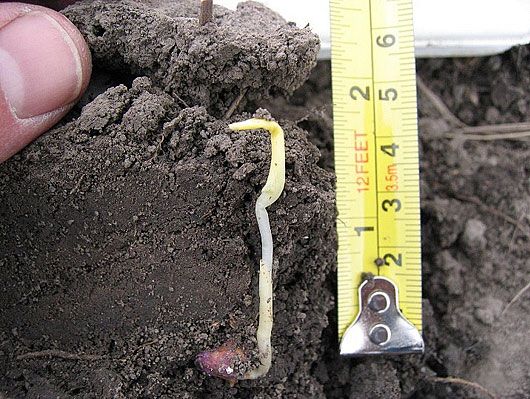
Leafing out underground due to soil crusting.
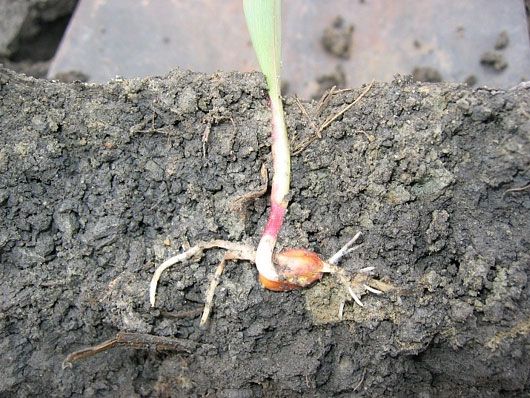
This seedling shows root decay issues. The soil color indicated that this soil is not very well drained.
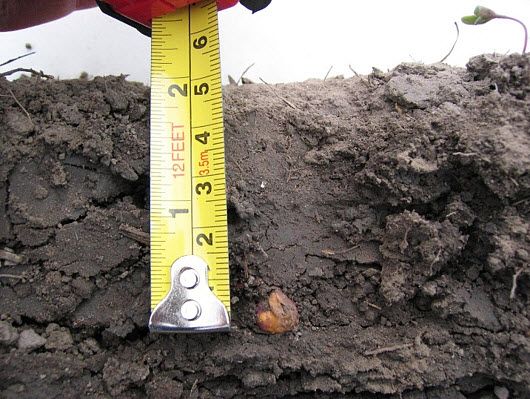
Opening up the seed furrow with a square-bottom spade reveals exactly how deep the seed was planted.
This seed shows considerable seed rot. The field had some drainage issues. It also looks like the embryo may have some insect feeding, most likely seed corn maggot.
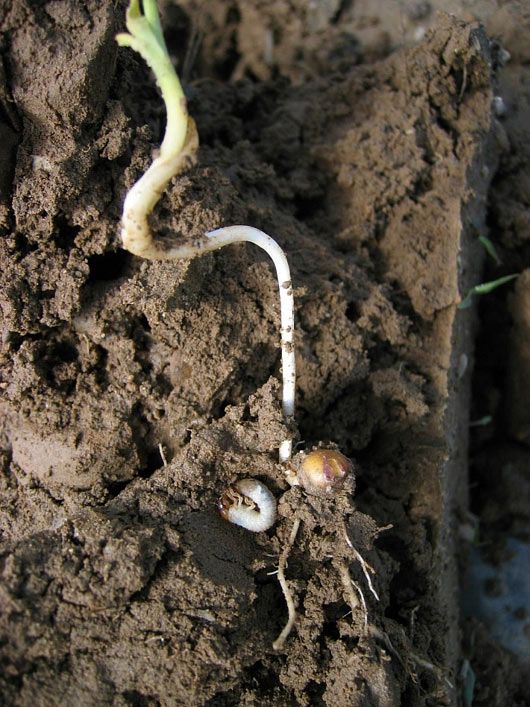
In this example, the grower noted uneven growth in this area of the field. Opening up the seed furrow revealed the insect culprit - white grub, active right next to the roots.
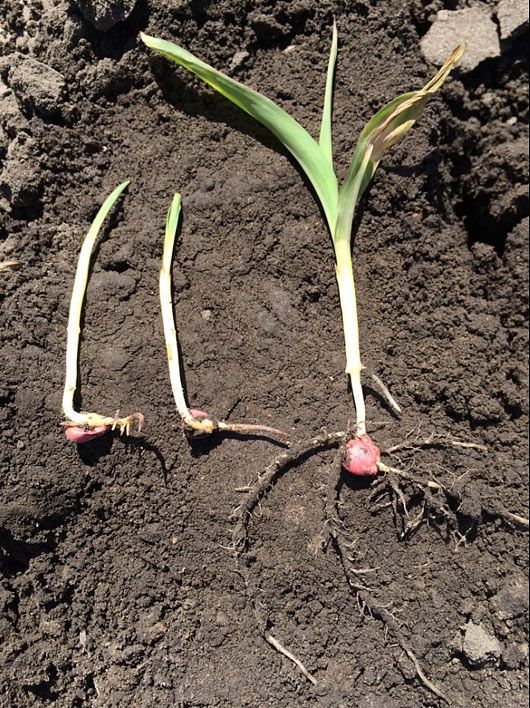
In this example:
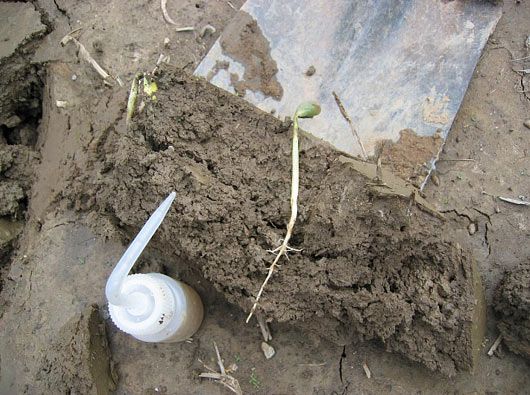
A small water bottle can be a useful tool to wash off the roots in order to examine them more closely.
Author: Gary Brinkman, CCA, CPAg, Pioneer Field Agronomist
April 2019
The foregoing is provided for informational use only. Please contact your Pioneer sales professional for information and suggestions specific to your operation. Product performance is variable and depends on many factors such as moisture and heat stress, soil type, management practices and environmental stress as well as disease and pest pressures. Individual results may vary.
Author: Gary Brinkman, CCA, CPAg, Pioneer Field Agronomist
April 2019
The foregoing is provided for informational use only. Please contact your Pioneer sales professional for information and suggestions specific to your operation. Product performance is variable and depends on many factors such as moisture and heat stress, soil type, management practices and environmental stress as well as disease and pest pressures. Individual results may vary.